In the annals of history, floods have left an indelible mark on civilizations, reshaping landscapes and altering the course of human existence. From biblical tales of Noah’s deluge to modern-day catastrophes, the world has witnessed the awesome power and destructive force of flooding. Join us on a journey through time as we delve into the stories of the most colossal floods to ever engulf our planet. From the ancient Yellow River floods to the modern-day tragedies like the Pakistan floods of 2010, we uncover the lessons learned and the resilience of humanity in the face of nature’s fury.
Delving into the Myth and Mystery of The Great Flood: Exploring Noah’s Biblical Cataclysm
The story of The Great Flood, as recounted in the Book of Genesis, stands as one of the most enduring tales of cataclysmic destruction and divine intervention in human history. Believed to have occurred around 2400 BCE, this biblical narrative has captured the imagination of believers and skeptics alike, sparking debates over its historicity, symbolism, and significance. In this exploration, we delve into the origins of the Noahic flood myth, its cultural and religious significance, and the ongoing quest to uncover archaeological and geological evidence that may shed light on this ancient cataclysm.


Origins of the Noahic Flood Myth:
The tale of The Great Flood is not unique to the Bible; similar flood narratives exist in various ancient cultures across the globe, suggesting a common cultural motif rooted in the collective memory of humanity. Scholars have identified parallels between the biblical account of Noah’s Ark and flood myths from Mesopotamian, Sumerian, and Babylonian traditions, such as the Epic of Gilgamesh and the Atrahasis Epic.


In these ancient tales, a righteous individual is warned by a deity about an impending flood and instructed to build an ark to survive the deluge along with a select group of humans and animals. The similarities between these flood narratives raise intriguing questions about their shared origins and the cultural diffusion of mythological motifs in ancient societies.


Interpreting the Symbolism:
While some interpret The Great Flood as a literal historical event, others view it as a symbolic allegory conveying moral, spiritual, and theological truths. For believers, the flood serves as a divine judgment upon a corrupt and sinful humanity, illustrating the consequences of moral disobedience and the importance of obedience to God’s will.
The preservation of Noah and his family aboard the ark symbolizes divine grace and redemption, offering hope for a new beginning and the renewal of creation. The rainbow covenant, established by God with Noah after the flood, symbolizes the promise of God’s mercy and faithfulness to humanity, despite its inherent flaws and failings.
Critics and skeptics, however, have raised questions about the feasibility of the ark’s construction, the logistics of gathering and caring for all the world’s species, and the lack of corroborating historical and geological evidence for a global flood of such magnitude. Some suggest that The Great Flood may have been inspired by local or regional flood events exaggerated over time through oral tradition and literary embellishment.
Unraveling the Mystery:
Despite the skepticism surrounding the historicity of The Great Flood, archaeologists, geologists, and historians continue to search for evidence that may corroborate or challenge the biblical narrative. Geological studies of ancient sediment layers, underwater archaeology, and satellite imaging of flood-prone regions offer valuable insights into past flooding events and their potential impact on human settlements.
In recent years, researchers have proposed various hypotheses to explain the origins of flood myths, ranging from the flooding of the Black Sea around 5600 BCE to catastrophic deluges caused by the breaching of natural dams or the impact of comets or asteroids. While these theories remain speculative, they underscore the complex interplay of geological, climatic, and cultural factors that may have contributed to the development of flood narratives in ancient societies.
Conclusion:
The Great Flood, as recounted in the Bible’s Book of Genesis, remains a source of fascination and controversy, stirring the imagination of believers and skeptics alike. Whether viewed as a historical event, a moral allegory, or a cultural archetype, the flood myth continues to captivate our curiosity and inspire ongoing exploration into the mysteries of the past.
As we sift through the layers of myth and meaning, we are reminded of the enduring power of storytelling to convey timeless truths about the human condition and our relationship to the natural world. Whether the flood waters recede into the realm of legend or leave traces of their passage in the sands of time, the quest to unravel the mystery of Noah’s Ark endures as a testament to our shared quest for understanding and meaning in the tapestry of human history.
The Wrath of the Yellow River: A History of Devastating Floods
For millennia, the Yellow River, or Huang He, has been both the cradle of Chinese civilization and the source of untold devastation. Throughout history, the river’s unpredictable floods have brought both prosperity and tragedy to the people living along its banks. Among the most catastrophic of these events was the flood of 1931, which stands as one of the deadliest natural disasters in recorded history. In this exploration, we delve into the recurring cycle of flood disasters on the Yellow River, their impact on Chinese society, and efforts to mitigate future calamities.


A River of Contrasts:
The Yellow River, known as “China’s Sorrow,” earned its ominous nickname due to its propensity for flooding and the devastation it has wrought upon the surrounding landscape. Originating in the Tibetan Plateau and winding its way through nine Chinese provinces before emptying into the Bohai Sea, the river’s meandering course and heavy sediment load make it prone to overflowing its banks during periods of heavy rainfall or snowmelt.
Historical Record of Disaster:
The history of the Yellow River is punctuated by a series of catastrophic floods that have left an indelible mark on Chinese society. From ancient times to the present day, the river’s floods have claimed countless lives, destroyed villages and farmland, and reshaped the course of history. One of the deadliest floods in recorded history occurred in 1931, during a period of widespread poverty and political instability in China.


The Flood of 1931:
The flood of 1931 was triggered by a combination of heavy rainfall and the failure of levees along the Yellow River, unleashing a torrent of water that inundated vast areas of the Chinese countryside. With an estimated death toll ranging from 1 to 4 million people, the flood of 1931 ranks among the deadliest natural disasters of the 20th century. The human suffering caused by the flood was compounded by widespread famine and disease, exacerbating the already dire situation facing millions of Chinese peasants.


Impact on Chinese Society:
The catastrophic floods of the Yellow River have had profound social, economic, and political consequences throughout Chinese history. In addition to the loss of life and property, floods have led to the displacement of millions of people, disrupted agricultural production, and contributed to social unrest and political instability. The Chinese government has long struggled to contain the river’s fury through a series of engineering projects, including the construction of dams, levees, and diversion channels. While these efforts have reduced the frequency and severity of floods in some areas, they have also led to environmental degradation and social displacement.


Mitigating Future Calamities:
In recent decades, the Chinese government has invested heavily in flood control and disaster management measures aimed at reducing the impact of future floods on vulnerable communities along the Yellow River. These efforts include the construction of large-scale reservoirs, the reinforcement of levees and embankments, and the development of early warning systems to alert residents to impending flood events. While these measures have helped to mitigate the risk of flooding to some extent, the Yellow River remains a potent force of nature that continues to pose challenges to Chinese society.
Conclusion:
The history of the Yellow River is a testament to the complex relationship between humanity and the forces of nature. While the river has sustained Chinese civilization for millennia, it has also brought untold suffering and destruction to those who dwell along its banks. As China continues to grapple with the threat of future floods, the lessons of the past serve as a sobering reminder of the need for vigilance, preparedness, and sustainable development in the face of nature’s wrath.
Remembering the Tragedy: The St. Felix’s Flood of 1530
In the annals of European history, the St. Felix’s Flood of 1530 stands as a stark reminder of the destructive power of nature and the vulnerability of coastal communities. Sweeping across parts of the Netherlands, Germany, and Denmark, this devastating flood claimed tens of thousands of lives and left a lasting impact on the region. In this exploration, we delve into the events leading up to the flood, its catastrophic consequences, and its enduring legacy in the collective memory of those affected.


Origins of the Disaster:
The St. Felix’s Flood, also known as the Grote Mandrenke (“Great Drowning of Men”), was caused by a powerful storm surge that struck the coastlines of the North Sea on the night of November 4, 1530. The storm, which was accompanied by high winds and unusually high tides, overwhelmed coastal defenses and inundated low-lying areas with a surge of seawater. The floodwaters breached dikes and embankments, engulfing villages, towns, and farmland in a matter of hours.


Impact and Loss of Life:
The devastation wrought by the St. Felix’s Flood was profound, resulting in the loss of tens of thousands of lives and the destruction of homes, crops, and infrastructure. Coastal communities bore the brunt of the disaster, with many villages and towns completely submerged beneath the floodwaters. The inundation of farmland led to widespread famine and economic hardship, exacerbating the already dire situation facing those affected by the flood.
Repercussions Across Europe:
The effects of the St. Felix’s Flood were felt far beyond the shores of the North Sea, reverberating throughout Europe and prompting widespread concern over the vulnerability of coastal regions to natural disasters. In the Netherlands, the flood sparked a renewed emphasis on the construction and maintenance of dikes, dams, and other flood defenses to protect against future inundations. Similarly, in Germany and Denmark, efforts were made to strengthen coastal defenses and improve disaster preparedness in the wake of the catastrophe.


Legacy and Remembrance:
Despite the passage of centuries, the memory of the St. Felix’s Flood endures as a somber reminder of the fragility of human existence in the face of nature’s fury. The event has been immortalized in local folklore, art, and literature, serving as a cautionary tale of the ever-present threat posed by coastal flooding. Memorials and commemorations held in affected communities pay tribute to the lives lost and serve as a testament to the resilience of those who survived.
Conclusion:
The St. Felix’s Flood of 1530 remains etched in the collective memory of Europe as a tragic chapter in the history of coastal flooding. As communities continue to confront the challenges of climate change and rising sea levels, the lessons of the past serve as a sobering reminder of the need for proactive measures to mitigate the risks posed by natural disasters. Through vigilance, preparedness, and collective action, we can strive to build more resilient and sustainable communities that are better equipped to withstand the forces of nature.
Unprecedented Deluge: Recalling the Great Mississippi Flood of 1927
In the annals of American history, few natural disasters have left a more indelible mark than the Great Mississippi Flood of 1927. Sweeping across the vast expanse of the Mississippi River Basin, this catastrophic event displaced hundreds of thousands of people, devastated communities, and forever altered the landscape of the American South. In this retrospective, we delve into the causes, impact, and legacy of one of the most monumental floods in U.S. history.


Origins of the Disaster:
The Great Mississippi Flood of 1927 was precipitated by a combination of heavy rainfall, snowmelt, and the failure of levees and flood control systems along the Mississippi River and its tributaries. Beginning in the spring of 1927, torrential rains inundated the region, causing the river to swell to unprecedented levels. As the waters continued to rise, levees designed to contain the river’s flow were overwhelmed, leading to widespread flooding across a vast swath of the American South.


Impact and Human Toll:
The consequences of the Great Mississippi Flood were staggering, with an estimated 27,000 square miles of land submerged beneath the floodwaters. Hundreds of thousands of people were displaced from their homes, forced to flee to higher ground or seek refuge in makeshift shelters. Entire towns and communities were swallowed by the rising waters, their infrastructure and livelihoods washed away in the deluge.


The human toll of the disaster was equally devastating, with thousands of lives lost and countless others forever changed by the trauma of displacement and loss. Disproportionately affecting African American communities, many of whom were forced to endure segregation and discrimination in relief efforts, the flood laid bare the deep-seated inequalities that plagued American society.
Response and Recovery Efforts:
In the wake of the disaster, the federal government mounted one of the largest relief and recovery efforts in U.S. history, mobilizing resources and personnel to aid those affected by the flood. President Calvin Coolidge appointed Herbert Hoover, then Secretary of Commerce, to oversee the relief efforts, coordinating the distribution of food, clothing, and medical supplies to flood victims.


Despite these efforts, however, the response to the Great Mississippi Flood was marked by controversy and criticism, with accusations of mismanagement, inefficiency, and discrimination leveled against government officials and relief agencies. African American communities, in particular, faced systemic barriers to accessing aid and assistance, exacerbating the already dire situation facing those most affected by the disaster.
Legacy and Lessons Learned:
The Great Mississippi Flood of 1927 left an enduring legacy that continues to shape the collective memory of the American South. In its aftermath, significant reforms were enacted to strengthen flood control infrastructure, improve disaster preparedness, and address the underlying social and economic disparities that had contributed to the devastation wrought by the flood.
Yet, the lessons of the Great Mississippi Flood remain as relevant today as they were nearly a century ago. As communities across the United States confront the escalating threats posed by climate change and extreme weather events, the need for proactive measures to mitigate the risks of flooding and ensure the resilience of vulnerable populations has never been more urgent. Through collective action and a commitment to equity and justice, we can strive to build a more resilient and sustainable future for all.
Unveiling Tragedy: The Banqiao Dam Disaster of 1975
The collapse of the Banqiao Dam in 1975 stands as one of the darkest chapters in the history of engineering failures and natural disasters. Triggered by Typhoon Nina, this catastrophic event unleashed a torrent of floodwaters that swept across China’s Henan province, resulting in one of the deadliest floods in recorded history. In this examination, we delve into the circumstances leading up to the Banqiao Dam failure, the harrowing impact of the ensuing flood, and the lessons learned from this tragic episode.
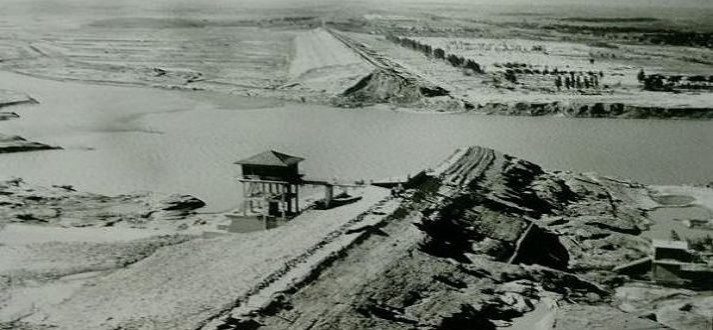

The Banqiao Dam: A Feat of Engineering:
Constructed in the 1950s as part of China’s ambitious Great Leap Forward campaign, the Banqiao Dam was heralded as a triumph of engineering prowess and a symbol of the nation’s modernization efforts. Spanning the Ru River in Henan province, the dam and its associated reservoir were designed to provide flood control, hydroelectric power, and irrigation to the surrounding region.


However, despite its initial promise, the Banqiao Dam was plagued by design flaws, inadequate maintenance, and poor oversight, leaving it vulnerable to the forces of nature when disaster struck.
Typhoon Nina and the Collapse:
In August 1975, Typhoon Nina made landfall in China, bringing with it record-breaking rainfall and widespread flooding. As the floodwaters surged, pressure on the Banqiao Dam and its network of auxiliary dams reached critical levels, exceeding the structure’s capacity to contain the rising waters.
On the fateful night of August 8, 1975, the Banqiao Dam finally gave way under the relentless onslaught of the floodwaters, unleashing a catastrophic deluge downstream. Villages, towns, and farmland were inundated within moments, trapping tens of thousands of people in the path of the raging floodwaters.
The Toll of Tragedy:
The collapse of the Banqiao Dam and the subsequent flooding resulted in a staggering loss of life, with estimates of the death toll ranging from 171,000 to 230,000 people. Entire communities were wiped out, their inhabitants swept away by the force of the flood or buried beneath the debris of collapsed buildings and infrastructure.


The human tragedy of the Banqiao Dam disaster was compounded by the widespread destruction of homes, crops, and livelihoods, leaving survivors grappling with the physical, emotional, and economic aftermath of the catastrophe.
Lessons Learned and Ongoing Challenges:
In the wake of the Banqiao Dam disaster, China embarked on a comprehensive review of its dam safety practices, implementing stricter regulations and oversight mechanisms to prevent similar tragedies in the future. New technologies for monitoring and early warning systems were developed to detect signs of impending dam failure and facilitate timely evacuation of at-risk communities.
However, despite these efforts, challenges remain in balancing the imperative of economic development with the need to prioritize public safety and environmental sustainability. As China continues to expand its network of dams and reservoirs to meet growing energy and water demands, the specter of another Banqiao looms large, underscoring the importance of robust risk management strategies and a commitment to learn from the lessons of the past.
Conclusion:
The Banqiao Dam disaster of 1975 serves as a sobering reminder of the devastating consequences that can result from the intersection of natural hazards and human folly. As we reflect on this tragic episode, let us honor the memory of those who perished in the floodwaters and reaffirm our commitment to building a safer, more resilient world for future generations.
Tragedy Unleashed: The North Sea Flood of 1953
In the dark hours of January 31st, 1953, the tranquil shores of the North Sea were transformed into a scene of unimaginable devastation. Driven by a potent combination of high spring tides and ferocious winds, a catastrophic storm surge swept across the coasts of the Netherlands and the United Kingdom, leaving death and destruction in its wake. In this retrospective, we delve into the events leading up to the North Sea Flood of 1953, its harrowing impact on coastal communities, and the enduring legacy of one of the deadliest natural disasters in European history.


The Perfect Storm:
The North Sea Flood of 1953 was the result of a confluence of meteorological factors, including a high spring tide coinciding with a severe European windstorm. As the storm bore down on the vulnerable low-lying coastlines of the Netherlands and the United Kingdom, it generated a massive surge of seawater that overwhelmed coastal defenses and inundated vast areas of land.


In the absence of modern forecasting and early warning systems, communities were caught off guard by the speed and ferocity of the advancing floodwaters, leaving them little time to evacuate or prepare for the impending disaster.
Devastation and Loss of Life:
The impact of the North Sea Flood was swift and catastrophic, claiming the lives of over 1,800 people in the Netherlands and the United Kingdom and displacing tens of thousands more. Entire villages and towns were submerged beneath the rising waters, their inhabitants swept away by the force of the flood or trapped in their homes as the deluge engulfed them.
In the aftermath of the disaster, survivors faced the grim task of rebuilding their shattered lives amid the wreckage left behind by the floodwaters. The scale of the devastation was unprecedented, with homes destroyed, infrastructure damaged, and farmland rendered barren by the saltwater inundation.
Response and Recovery Efforts:
In the wake of the North Sea Flood, emergency response efforts were launched on both sides of the English Channel to provide aid and assistance to those affected by the disaster. The Dutch government, in particular, undertook a massive reconstruction and flood defense program known as the Delta Works, which involved the construction of a network of dams, dikes, and storm surge barriers to protect against future flooding.


Similarly, in the United Kingdom, measures were implemented to strengthen coastal defenses and improve flood preparedness in the aftermath of the disaster. The lessons learned from the North Sea Flood of 1953 have since informed disaster management practices and infrastructure development strategies in coastal regions around the world.
Legacy and Lessons Learned:
The North Sea Flood of 1953 remains etched in the collective memory of the Netherlands and the United Kingdom as a poignant reminder of the ever-present threat posed by coastal flooding. As climate change accelerates and sea levels rise, the need for proactive measures to mitigate the risks of flooding and safeguard vulnerable communities has never been more urgent.
Through investment in resilient infrastructure, effective early warning systems, and coordinated disaster response mechanisms, we can strive to build a more secure and sustainable future for coastal populations worldwide. As we reflect on the tragedy unleashed by the North Sea Flood of 1953, let us honor the memory of those who perished and reaffirm our commitment to protecting lives and livelihoods in the face of nature’s fury.
Deluge of Despair: The 2010 Pakistan Floods
In the summer of 2010, Pakistan was plunged into chaos and devastation as torrential monsoon rains unleashed catastrophic flooding across vast swathes of the country. With an estimated 20 million people affected, the 2010 Pakistan floods stand as one of the most severe natural disasters in the nation’s history. In this examination, we delve into the causes, consequences, and response to this unprecedented deluge that wreaked havoc on communities, infrastructure, and livelihoods.
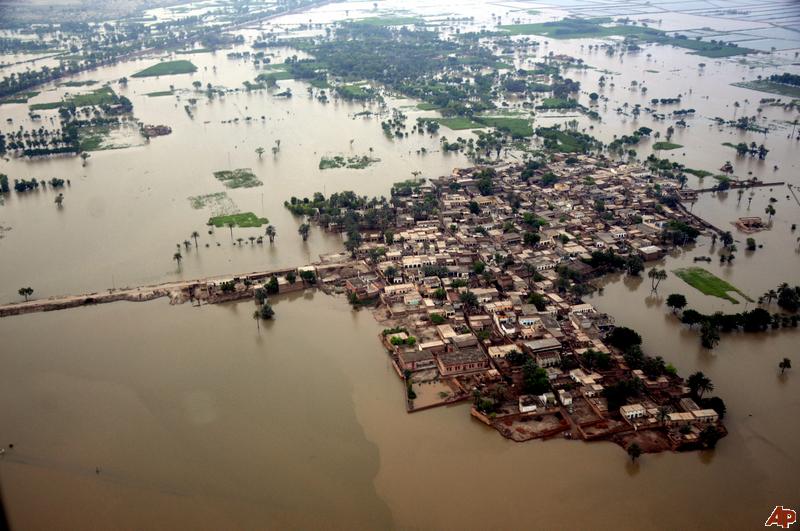

Origins of the Disaster:
The 2010 Pakistan floods were triggered by an unusually intense monsoon season that brought relentless rainfall to the country, causing rivers to swell to dangerous levels and inundating low-lying areas. The heavy rains were exacerbated by deforestation, urbanization, and inadequate infrastructure, which contributed to the rapid runoff of rainwater and the worsening of flooding conditions.
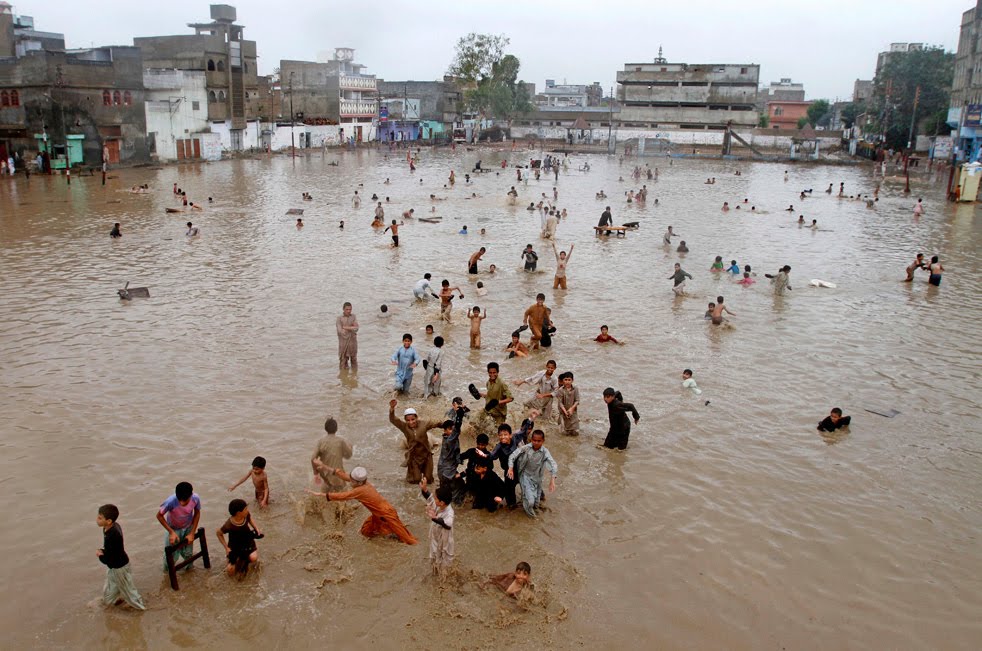

As the floodwaters surged across the landscape, they overwhelmed riverbanks, breached levees, and submerged villages, towns, and agricultural land under meters of water. The scale and severity of the flooding were unprecedented, leaving millions of people stranded without access to clean water, food, or shelter.
Consequences and Human Toll:
The impact of the 2010 Pakistan floods was staggering, with extensive damage to infrastructure, crops, and homes. Entire communities were devastated, with homes destroyed, schools and hospitals damaged, and vital transportation networks disrupted. The floodwaters also contaminated water sources, leading to outbreaks of waterborne diseases such as cholera and typhoid, further exacerbating the humanitarian crisis.
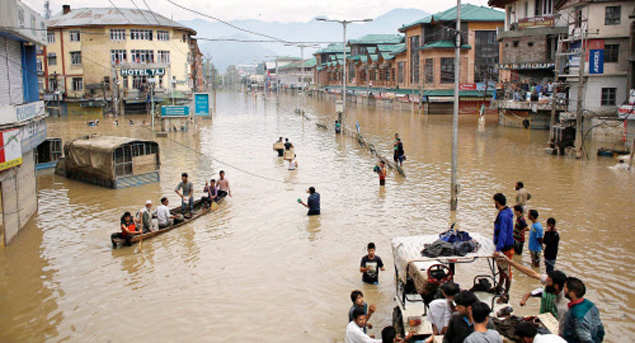

The human toll of the disaster was immense, with thousands of lives lost and millions more displaced from their homes. Many survivors were left with nothing but the clothes on their backs, forced to seek refuge in overcrowded relief camps or makeshift shelters. The most vulnerable members of society, including children, the elderly, and people with disabilities, were particularly hard hit by the devastation, facing heightened risks of malnutrition, illness, and exploitation.
Response and Recovery Efforts:
In the aftermath of the 2010 Pakistan floods, the Pakistani government, international aid organizations, and humanitarian agencies launched a massive relief and recovery effort to assist those affected by the disaster. Emergency supplies of food, water, shelter, and medical aid were rushed to flood-affected areas, while search and rescue teams worked tirelessly to evacuate stranded individuals and provide assistance to those in need.


Despite these efforts, challenges remained in reaching remote and isolated communities, ensuring equitable distribution of aid, and addressing the long-term needs of flood survivors. Rebuilding infrastructure, restoring livelihoods, and strengthening disaster preparedness and risk reduction measures were essential components of the recovery process, requiring sustained investment and commitment from both government and non-governmental stakeholders.
Lessons Learned and Future Resilience:
The 2010 Pakistan floods served as a wake-up call to the urgent need for improved disaster preparedness, risk management, and climate resilience in vulnerable regions. Efforts to address underlying factors such as deforestation, poor land-use planning, and inadequate infrastructure must be prioritized to reduce the risk of future disasters and protect the lives and livelihoods of millions of people.
Investments in early warning systems, flood forecasting, and community-based disaster preparedness initiatives can help build resilience and empower communities to better cope with and respond to future flooding events. By learning from the lessons of the past and taking proactive measures to mitigate the impacts of climate change, we can strive to build a more resilient and sustainable future for all.
Remembering Tragedy: The Johnstown Flood of 1889
In the spring of 1889, the idyllic town of Johnstown, Pennsylvania, was forever changed by a calamity of epic proportions. The failure of the South Fork Dam, located upstream of the town, unleashed a catastrophic flood that engulfed the valley below, leaving death and destruction in its wake. The Johnstown Flood of 1889 stands as one of the deadliest natural disasters in American history, claiming the lives of over 2,200 people and leaving an indelible mark on the community and the nation. In this retrospective, we delve into the events leading up to the disaster, its devastating consequences, and its enduring legacy.
Origins of the Disaster:
The South Fork Dam, originally constructed as part of the Pennsylvania Main Line Canal system in the 1830s, was repurposed in the 1870s to create a reservoir for the South Fork Fishing and Hunting Club, an exclusive retreat for wealthy industrialists. Over the years, the dam fell into disrepair due to neglect and poor maintenance, leading to concerns about its structural integrity.
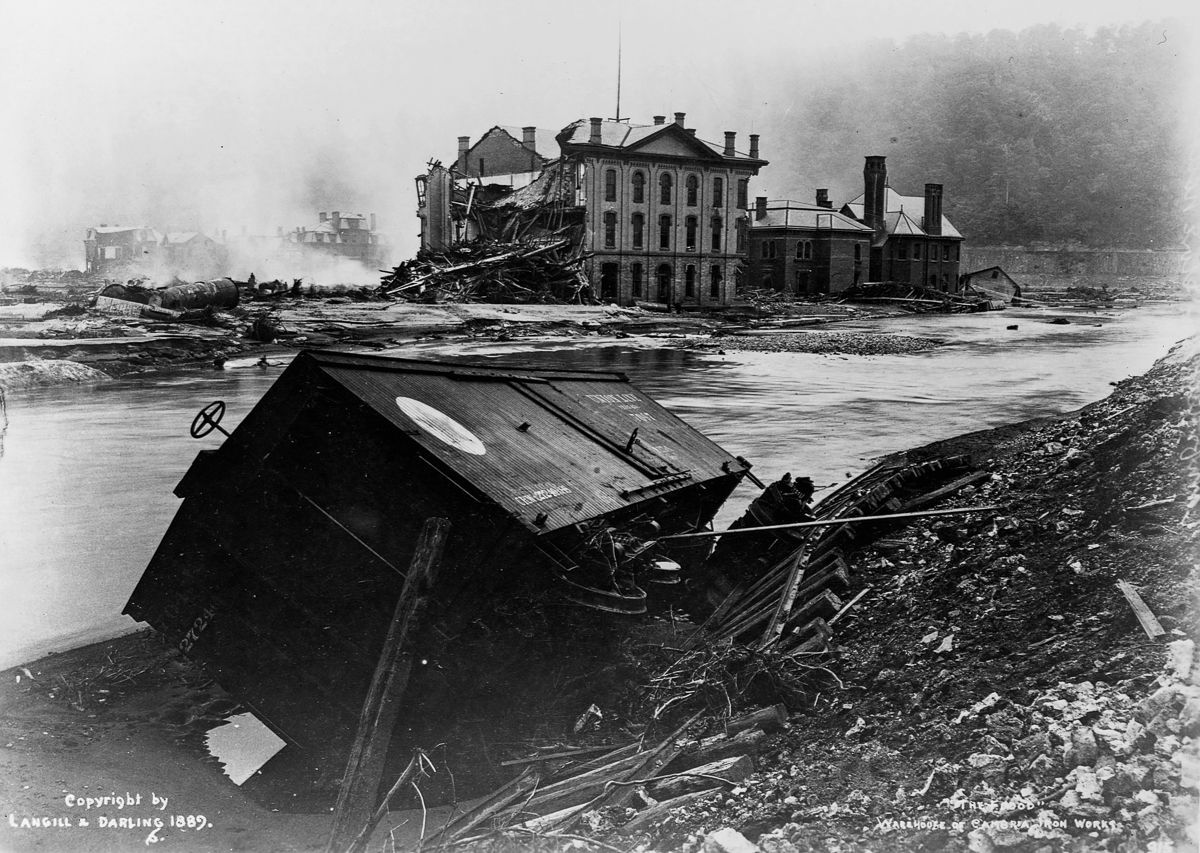

On May 31, 1889, after days of heavy rainfall, the dam’s earthen embankment could no longer withstand the pressure of the rising water levels in the reservoir. With a deafening roar, the dam gave way, unleashing a wall of water that hurtled downstream towards the unsuspecting town of Johnstown.
Devastation and Loss of Life:
The impact of the Johnstown Flood was swift and merciless. The towering wall of water, debris, and mud engulfed the valley below, sweeping away everything in its path with irresistible force. Homes were torn from their foundations, bridges were washed away, and entire neighborhoods were obliterated in a matter of minutes.
The human toll of the disaster was staggering, with over 2,200 people losing their lives in the floodwaters. Men, women, and children were swept away by the raging torrent or crushed beneath the debris of collapsed buildings. The scale of the devastation was incomprehensible, leaving the survivors grappling with grief, trauma, and the monumental task of rebuilding their shattered lives.
Response and Recovery Efforts:
In the aftermath of the Johnstown Flood, a massive relief and recovery effort was launched to aid the survivors and rebuild the devastated town. Volunteer rescue teams from neighboring communities rushed to the scene, risking their own lives to save those trapped in the wreckage. Emergency supplies of food, clothing, and medical aid were mobilized to provide assistance to the survivors.


Despite the outpouring of support and solidarity from across the nation, the road to recovery was long and arduous for the people of Johnstown. Homes, businesses, and infrastructure had been swept away by the floodwaters, leaving behind a landscape of destruction and despair. The survivors faced the daunting challenge of rebuilding their community from the ground up, with limited resources and overwhelming grief.
Legacy and Lessons Learned:
The legacy of the Johnstown Flood endures as a testament to the resilience of the human spirit in the face of adversity. In its aftermath, efforts were made to strengthen dam safety regulations, improve emergency response capabilities, and raise awareness about the risks of flooding in vulnerable communities.
The tragedy also sparked a national conversation about social responsibility, inequality, and the need for greater accountability among the wealthy elite who had profited from the South Fork Fishing and Hunting Club. While the scars of the Johnstown Flood may never fully heal, the spirit of solidarity and compassion that emerged in its wake serves as a beacon of hope for future generations.
Conclusion:
The Johnstown Flood of 1889 remains a haunting reminder of the awesome power of nature and the fragility of human civilization. As we reflect on this tragic chapter in American history, let us honor the memory of those who perished and reaffirm our commitment to building a more resilient and compassionate society that is better equipped to face the challenges of an uncertain future.
Underwater Crisis: Recounting the 2011 Thailand Floods
In the summer of 2011, Thailand was engulfed by a deluge of unprecedented proportions, as torrential monsoon rains and dam discharges unleashed catastrophic flooding across vast expanses of the country. The 2011 Thailand floods stand as one of the most devastating natural disasters in the nation’s history, causing widespread destruction, economic losses, and displacement of millions. In this analysis, we delve into the causes, impacts, and response to this calamitous event that left a lasting imprint on Thailand’s landscape and society.
Origins of the Disaster:
The genesis of the 2011 Thailand floods can be traced back to a combination of factors, including unusually heavy monsoon rains and the discharge of water from dams to manage rising water levels. The monsoon season, which typically occurs from May to October, brought relentless rainfall to the region, saturating the soil and swelling rivers to dangerous levels.


Compounding the situation, authorities were forced to release water from dams to prevent reservoirs from overflowing, exacerbating the flooding downstream. Inadequate urban planning, deforestation, and encroachment on floodplains also contributed to the severity of the flooding, leaving communities vulnerable to the rising waters.
Impact and Economic Losses:
The consequences of the 2011 Thailand floods were profound, with large areas of the country inundated under meters of water. Homes, businesses, and infrastructure were submerged, leaving behind a trail of destruction and economic devastation. Industrial estates, which housed manufacturing facilities for electronics, automobiles, and consumer goods, were particularly hard hit, disrupting global supply chains and causing billions of dollars in losses.
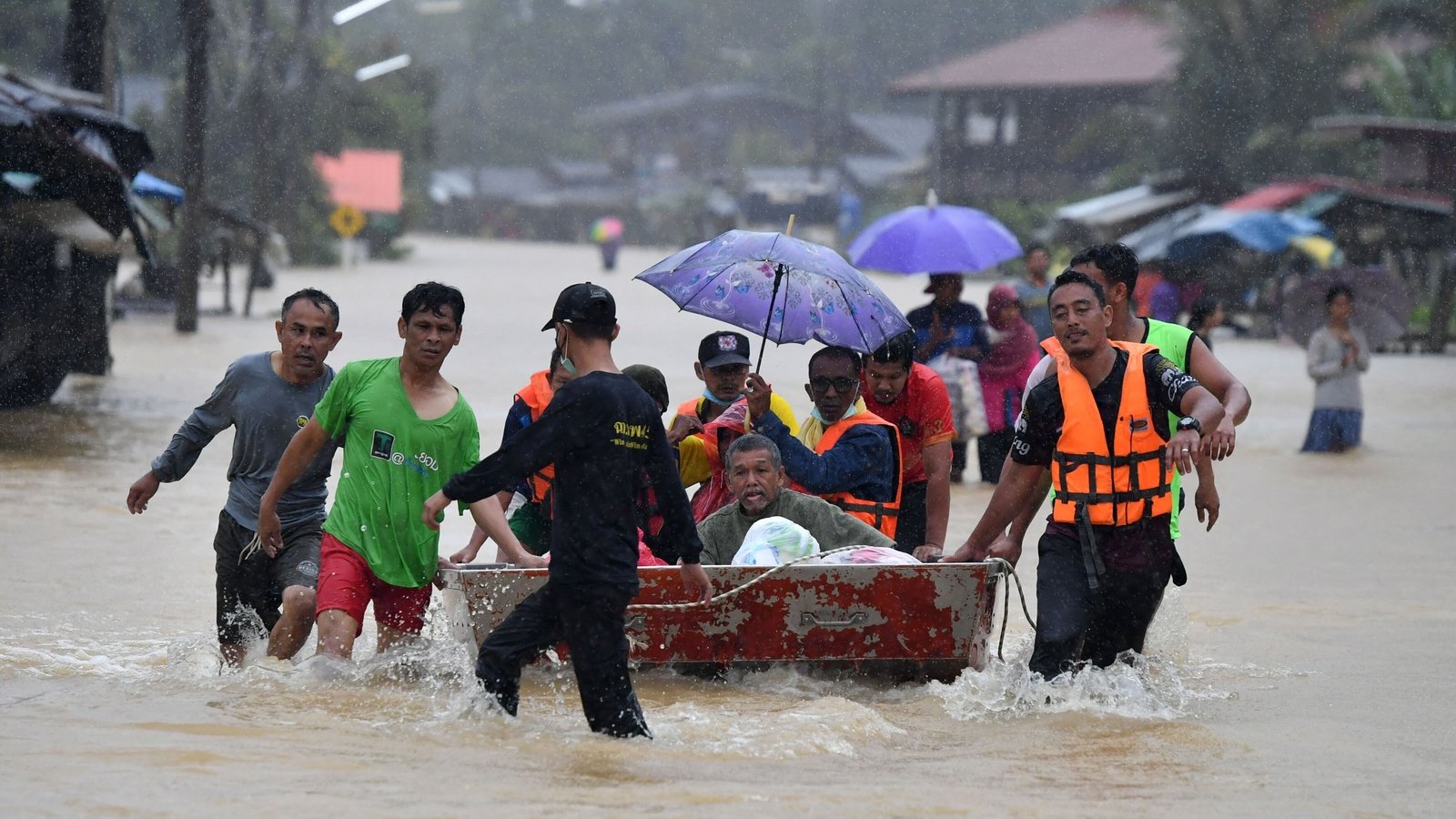

The agricultural sector, a cornerstone of Thailand’s economy, also suffered extensive damage, with crops destroyed and farmland rendered unusable by the floodwaters. Millions of people were displaced from their homes, forced to seek refuge in temporary shelters or makeshift evacuation centers as the waters continued to rise.
Response and Recovery Efforts:
In the wake of the 2011 Thailand floods, the Thai government, along with local authorities and international aid organizations, launched a massive relief and recovery effort to assist those affected by the disaster. Emergency supplies of food, water, and medical aid were distributed to flood-affected communities, while search and rescue teams worked tirelessly to evacuate stranded individuals and provide assistance to those in need.
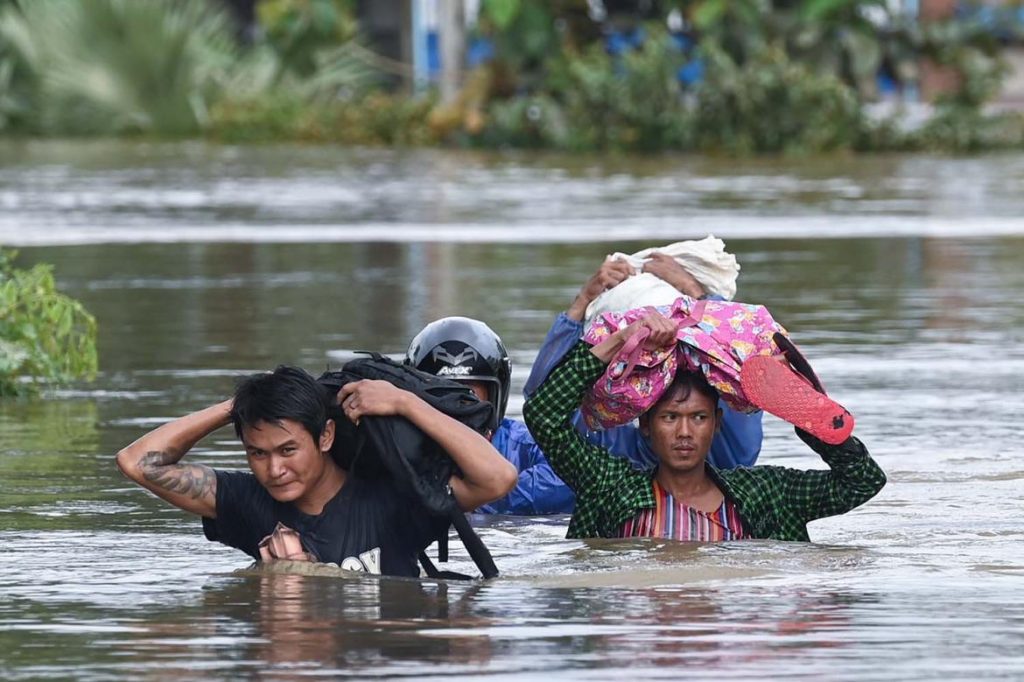

Efforts were also made to restore essential services, repair infrastructure, and support livelihoods as part of the long-term recovery process. However, the scale of the devastation and the challenges of rebuilding in the aftermath of such a catastrophic event proved daunting, requiring sustained commitment and resources from all stakeholders involved.
Lessons Learned and Future Preparedness:
The 2011 Thailand floods served as a stark reminder of the urgent need for improved disaster preparedness, risk management, and climate resilience in vulnerable regions. Investments in early warning systems, flood forecasting, and infrastructure development are essential to mitigate the impacts of future flooding events and protect the lives and livelihoods of millions of people.
Additionally, efforts to address underlying factors such as deforestation, urbanization, and land-use planning must be prioritized to reduce the risk of future disasters and build more resilient communities. By learning from the lessons of the past and taking proactive measures to adapt to changing environmental conditions, Thailand can strive to build a safer and more sustainable future for all.
Salvaging History: Reflecting on the 1966 Florence Flood
In November 1966, the picturesque city of Florence, Italy, was plunged into chaos and despair as the tranquil waters of the Arno River transformed into a raging torrent of destruction. The devastating flood, which inundated the historic city center, inflicted severe damage on Florence’s cultural heritage, including priceless artworks, libraries, and museums. The 1966 Florence Flood, also known as the Arno River Flood, remains etched in the collective memory of the city and the world as a testament to the fragility of human civilization in the face of nature’s fury. In this retrospective, we delve into the events leading up to the disaster, its impact on Florence’s cultural treasures, and the monumental efforts to salvage and restore the city’s artistic legacy.
Origins of the Disaster:
The 1966 Florence Flood was triggered by a combination of factors, including heavy rainfall and the failure of flood control measures along the Arno River. Unusually intense rainfall in the upper reaches of the river basin caused water levels to rise rapidly, overwhelming the city’s defenses and inundating low-lying areas of Florence.
As the floodwaters surged through the streets of the city, they carried with them a deadly cargo of mud, debris, and sewage, wreaking havoc on homes, businesses, and infrastructure. Bridges collapsed, roads were washed away, and buildings crumbled under the force of the torrent, leaving behind a scene of devastation and despair.
Impact on Cultural Heritage:
The cultural heritage of Florence, renowned for its rich artistic and architectural legacy, bore the brunt of the flood’s fury. Priceless artworks, manuscripts, and rare books housed in libraries, museums, and churches were submerged under meters of water, putting centuries of human creativity and ingenuity at risk of being lost forever.
The damage to Florence’s cultural treasures was particularly acute in the city’s historic center, where iconic landmarks such as the Uffizi Gallery, the Biblioteca Nazionale Centrale di Firenze, and the Basilica di Santa Croce suffered extensive flooding and damage. Thousands of artworks, including masterpieces by Renaissance masters such as Michelangelo, Leonardo da Vinci, and Botticelli, were submerged or damaged by the floodwaters, prompting an international outcry and a race against time to rescue and restore these irreplaceable treasures.
Salvage and Restoration Efforts:
In the aftermath of the Florence Flood, a herculean effort was launched to salvage and restore the city’s cultural heritage. Teams of volunteers, conservationists, and art experts from around the world descended upon Florence to lend their expertise and support to the rescue and recovery efforts.
Using innovative techniques and equipment, including pumps, suction devices, and chemical treatments, conservators worked tirelessly to remove water, mud, and debris from flooded buildings and artworks. Thousands of damaged items were carefully cleaned, repaired, and restored, often requiring years of painstaking effort and expertise to return them to their former glory.
Legacy and Lessons Learned:
The 1966 Florence Flood left an indelible mark on the city and its inhabitants, prompting a renewed commitment to safeguarding Florence’s cultural heritage for future generations. The disaster served as a wake-up call to the urgent need for improved flood control measures, disaster preparedness, and conservation practices to protect the world’s cultural treasures from the ravages of nature.


In the decades since the flood, significant investments have been made in flood defenses, monitoring systems, and emergency response protocols to reduce the risk of similar disasters in Florence and other vulnerable cities around the world. The lessons learned from the 1966 Florence Flood continue to inform efforts to preserve and protect our shared cultural heritage, ensuring that the legacy of the past endures for generations to come.








